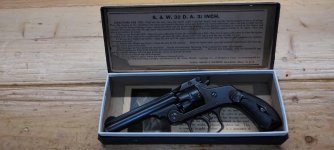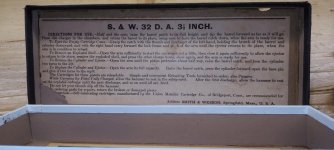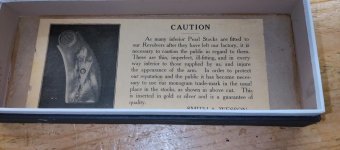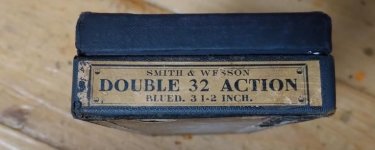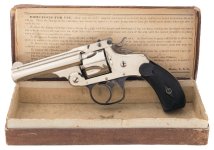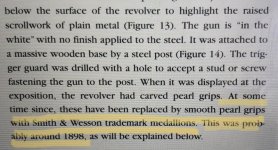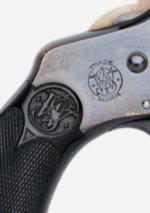I have been researching the MOP Warning label placed on the bottom of boxes from before the Twentieth Century and ran across a 32 DA box I had purchased for an early 2nd Model I have. Checking through my boxes, I found this box had such a label. I have always thought that the label did not appear until the 1890s, but looking at this box, maybe much earlier.
I bought the box pictured below to go with my 32 DA. The box was in bad shape, so I repaired it. It has the MOP warning label in the bottom. Box also has a serial number 13213 on the bottom which dates it to around 1880. My gun is serial number 20633 and it shipped in 1881.
This box, with its early serial number, indicates a much earlier MOP label date than anything else I have ran across, so am asking anyone who has any research or ideas of the origin date for this label to let me know.
I bought the box pictured below to go with my 32 DA. The box was in bad shape, so I repaired it. It has the MOP warning label in the bottom. Box also has a serial number 13213 on the bottom which dates it to around 1880. My gun is serial number 20633 and it shipped in 1881.
This box, with its early serial number, indicates a much earlier MOP label date than anything else I have ran across, so am asking anyone who has any research or ideas of the origin date for this label to let me know.
Attachments
Last edited:

